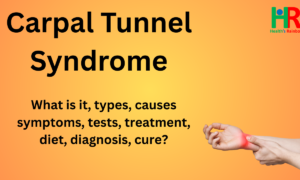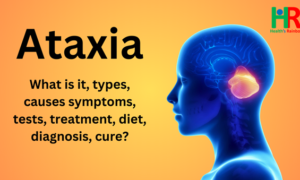
What is Bell’s Palsy?
Bell’s Palsy is a condition that causes temporary weakness or paralysis of the muscles in one side of your face. It makes that side of your face droop.
Definition of Bell’s Palsy
Bell’s Palsy is a form of facial paralysis resulting from damage to the facial nerve (cranial nerve VII). This nerve controls muscles on one side of your face, including those for blinking, closing your eyes, smiling, frowning, and making facial expressions.
Types of Bell’s Palsy?
Bell’s Palsy is generally considered a single condition, but it can be classified by severity:
• Mild: Temporary weakness.
• Moderate: Noticeable weakness with some difficulty in movement.
• Severe: Complete paralysis of one side of the face.
Symptoms of Bell’s Palsy?
Symptoms typically appear suddenly and can include:
• Rapid onset of mild weakness to total paralysis on one side of your face — occurring within hours to days.
• Facial drooping and difficulty making facial expressions, such as closing your eye or smiling.
• Drooling.
• Pain around the jaw or behind the ear on the affected side.
• Increased sensitivity to sound on the affected side.
• Headache.
• A loss of taste.
• Changes in the amount of tears and saliva you produce.
Causes of Bell’s Palsy?
The exact cause is often unknown, but it’s thought to be related to swelling and inflammation of the facial nerve. Some potential contributing factors include:
• Viral infections, such as herpes simplex virus (cold sores and genital herpes), herpes zoster virus (chickenpox and shingles), Epstein-Barr virus (mononucleosis), and others.
• Other potential causes include Lyme disease, and sarcoidosis.
Who Can Suffer from Bell’s Palsy?
Bell’s Palsy can affect anyone, but it’s more common in:
• Pregnant women.
• People with diabetes.
• People with upper respiratory infections.
Diagnostic Tests of Bell’s Palsy?
• Clinical Evaluation: Primarily based on observation of facial weakness and a neurological examination.
• Physical Examination: To rule out other causes of facial paralysis.
• Blood Tests: To check for underlying infections like Lyme disease or other conditions.
• Electromyography (EMG): To assess the extent of nerve damage (if recovery is delayed).
• Magnetic Resonance Imaging (MRI) or Computed Tomography (CT) scans: To rule out other potential causes, such as a tumor or stroke.
Stages of Bell’s Palsy?
Bell’s Palsy progression varies, but it generally follows these stages:
• Onset: Rapid development of symptoms.
• Plateau: Symptoms stabilize.
• Recovery: Gradual improvement in muscle function.
• Recovery times vary, most people start to see improvement within a few weeks, and complete recovery within 3-6 months.
Treatment of Bell’s Palsy?
• Medications:
o Corticosteroids (e.g., prednisone): To reduce inflammation.
o Antiviral medications (e.g., acyclovir): If a viral infection is suspected.
• Physical Therapy: Facial massage and exercises to help stimulate facial nerves.
• Eye Care: Lubricating eye drops and patches to protect the affected eye.
• Pain Relievers: Over-the-counter pain relievers can help with discomfort.
Diet for Bell’s Palsy?
There is no specific diet for Bell’s Palsy, but a healthy, balanced diet can support overall recovery.
Prevention
There’s no proven way to prevent Bell’s Palsy, as the exact cause is often unknown.
Overall Survival Rate of Bell’s Palsy?
The prognosis for Bell’s Palsy is generally excellent. Most people recover fully, although some may experience residual weakness.
Which Doctor Will Treat Bell’s Palsy?
• Primary care physician.
• Neurologist.
• Otolaryngologist (ear, nose, and throat doctor).
Diseases Associated with Bell’s Palsy?
• Lyme disease.
• Ramsay Hunt syndrome (herpes zoster oticus).
• Sarcoidosis.
How We Can Prevent Bell’s Palsy?
As the cause is often unknown, there is no real prevention method.
For more information Visit us :
Website: http://www.healthsrainbow.com/
Website Blog: https://www.healthsrainbow.com/blog/
Subscriber: https://www.youtube.com/@healthsrainbow4897
Facebook Page: https://www.facebook.com/profile.php?id=100087738795787
Facebook Main Page: https://www.facebook.com/profile.php?id=100072657459686
Instagram: https://www.instagram.com/healthsrainbow/
Twitter: https://twitter.com/healths_rainbow
RELATED VIDEO :
- child health care tips : https://youtu.be/iAY_uSSJE_U
- Uti infections in children’s : https://youtu.be/ryswMaWFCmk
- Down syndrome symptoms : https://youtu.be/-8cENbESEcU
RELATED ARTICLE :
- Heart birth defects : https://www.healthsrainbow.com/blog/2022/07/14/
- Toddlers bite : https://www.healthsrainbow.com/blog/2022/04/21/
- Dermatitis in Kids : https://www.healthsrainbow.com/blog/2022/04/21/
VISIT OUR WEBSITE :
This video Covers the information about:
What is Bell’s Palsy? Types of Bell’s Palsy? Symptoms of Bell’s Palsy? Causes of Bell’s Palsy? Who Can Suffer from Bell’s Palsy? Diagnostic Tests of Bell’s Palsy? Stages of Bell’s Palsy? Treatment of Bell’s Palsy? Diet for Bell’s Palsy ? Which Doctor Will Treat Bell’s Palsy? How We Can Prevent Bell’s Palsy
PUBLISHED BY HEALTHS RAINBOW




